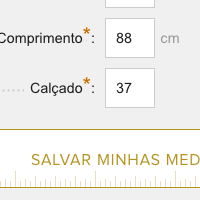Case study: Ecommerce Clothing size feature
Overview
Uselets outlet is an e-commerce that works with national and international brands in the fashion market. As a UX and web designer for the Uselets development team, since its startup phase, my responsibility was to develop solutions to improve the user's product findability.
Problem
After 12 months of operation, the exchanges and returns department registered an excess of its activities. As it is a multi-brand context, there was a lot of differentiation between the sizes of the products and the measures were not properly explained on the product pages. User dissatisfaction was detected by the growing incidence of exchange or return transactions, which also meant more work for this department.
Users needed an easier way to find products that fit their size, and moreover, they felt safe to buy these products with their exact measurements.
Process
The process started with identifying the need to display more information for product sizes, in addition to the classic P, M and G. This meant, in part, extending product size data by crossing with new user data.
In conjunction with the product and purchasing department, new general measures were defined for each product:
-height
- chest
- waist
- hip
- length
- shoes
As these data were nonexistent until then in the database, I was responsible for idealizing the input flow interfaces for these new data to be entered by the user.
The idea would be to clarify, with more precision, the ideal measures for each user. After meetings with the IT, product and purchasing departments, I started to develop My Measures.
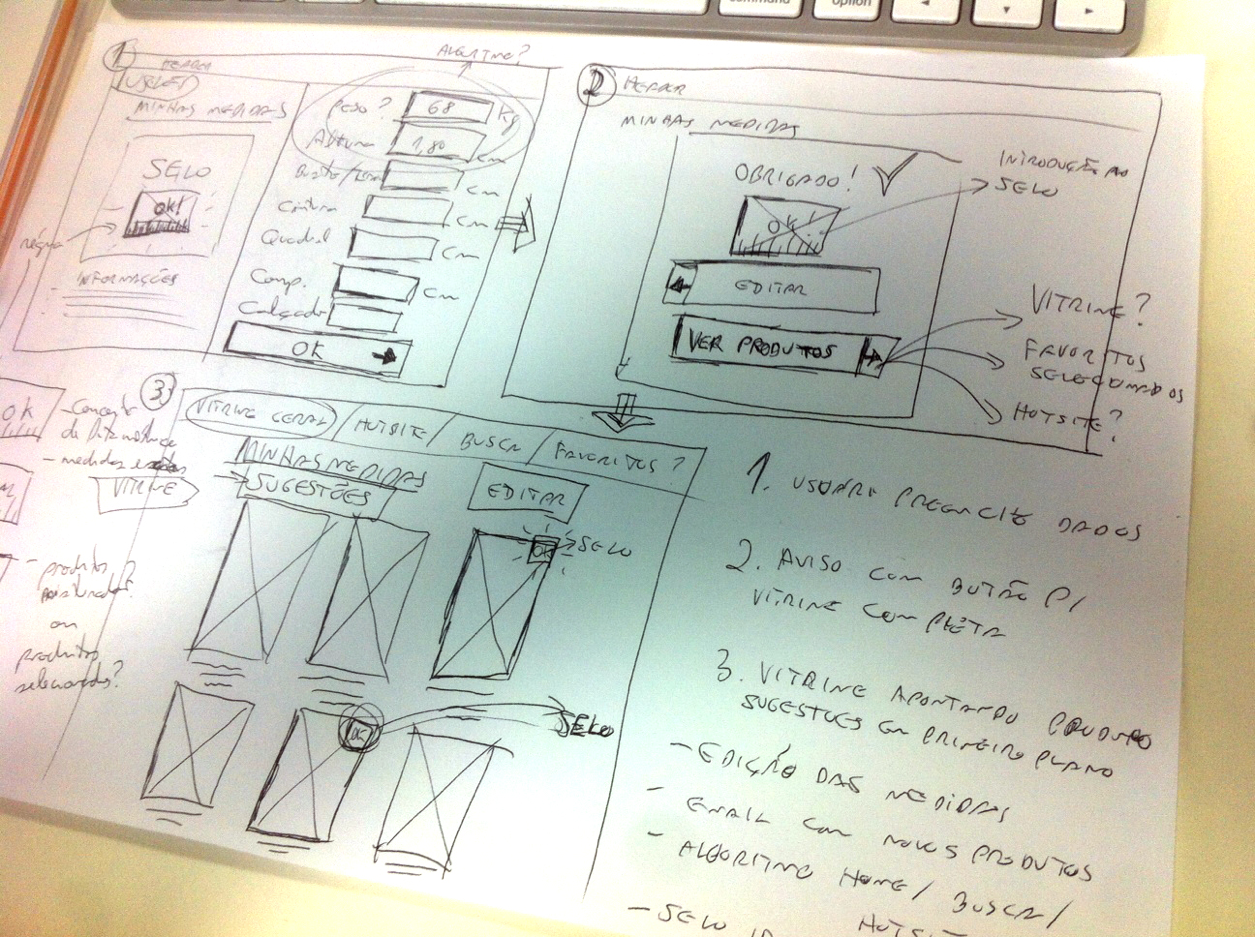
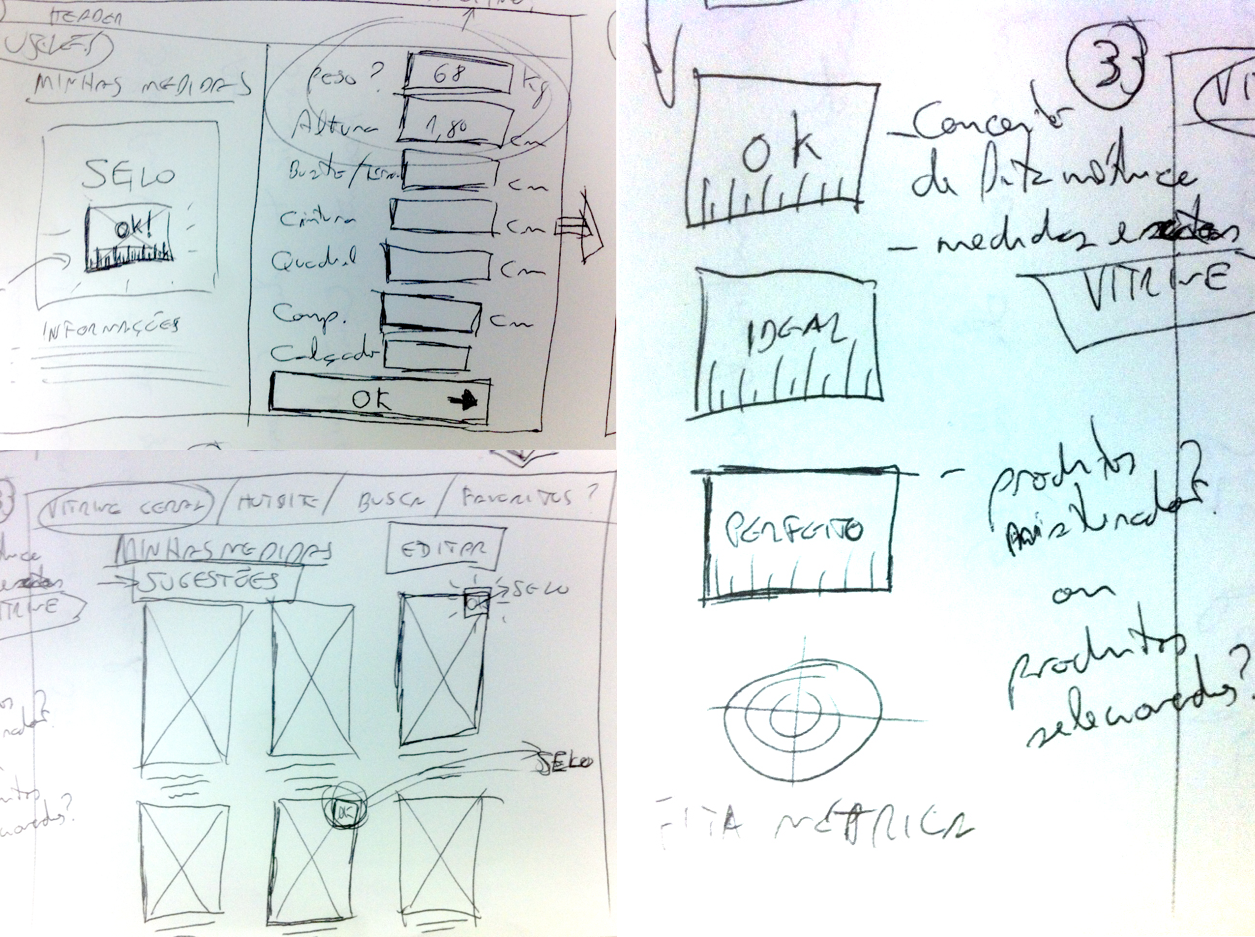
After writing down the ideas, I created a small low level wireframe using Axure.
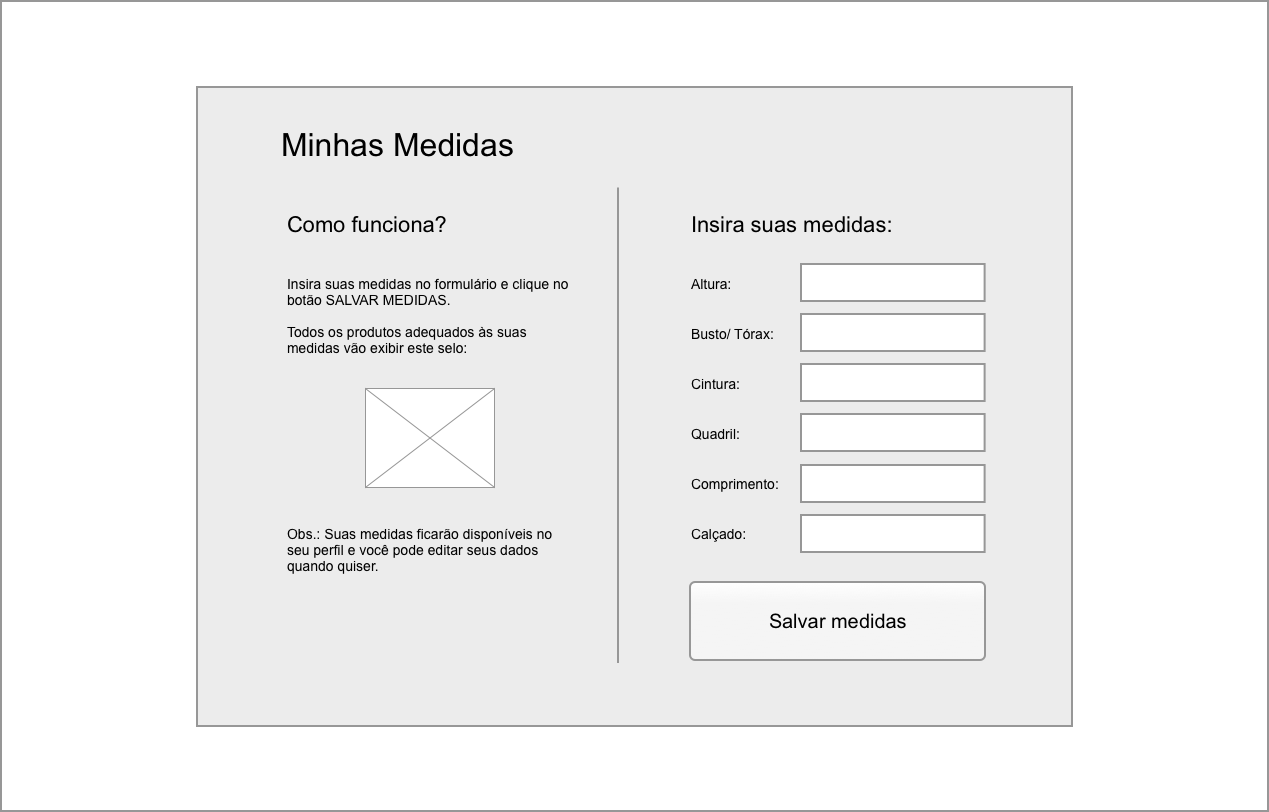
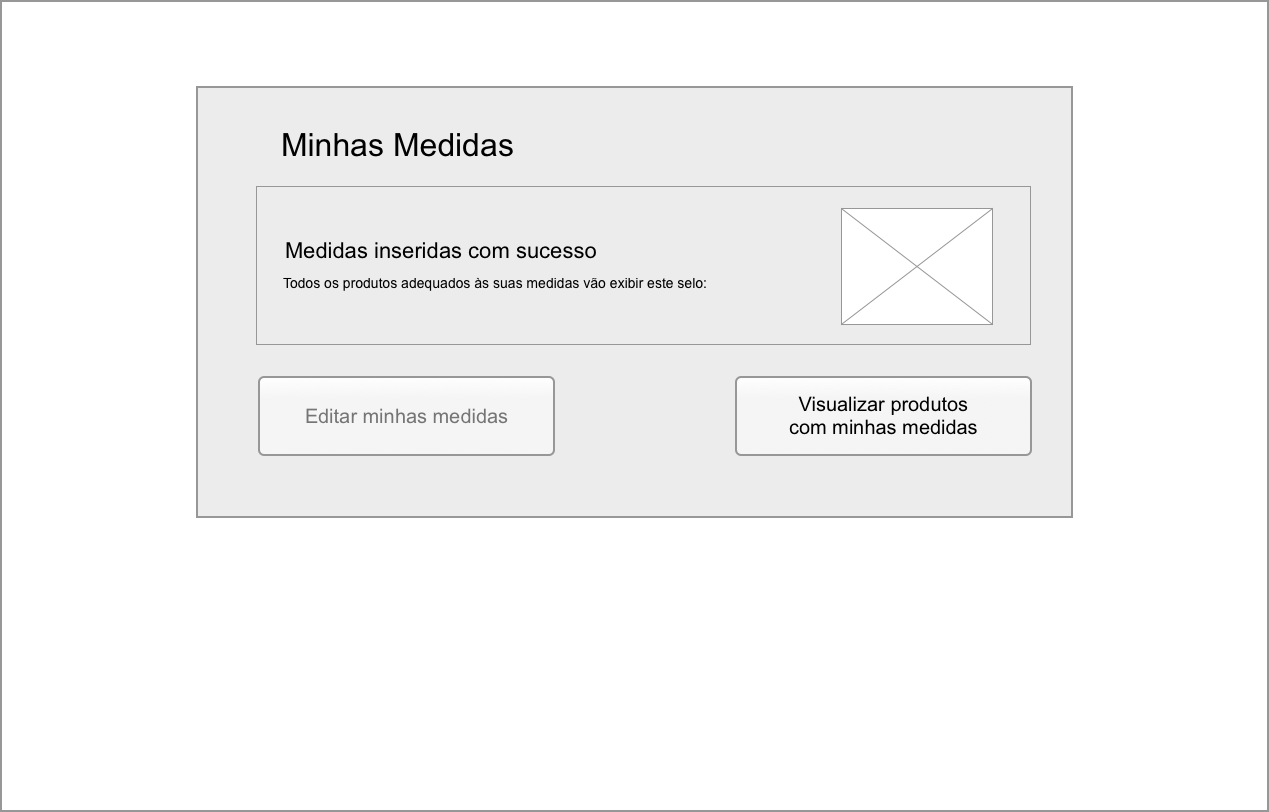
After the wireframe was approved, I built a small navigable prototype with InvisionApp and started the validation step with users. I validated the prototype with 5 different users, doing a guerrilla survey. This method included heavy users of fashion e-commerce. Observing their reactions was essential for validation. At first some interesting points were discovered:
- Most users were unaware of their specific measurements.
- Some of the measures were not sufficiently clear to the user.
- There was no visual association for each measure and the user increased the data insertion time.
Changes:
- Insertion of short steps through topics, guiding the user to fill it out.
- Insertion of an associated infographic directly to the inputs of each measure.
- Modification by gender, dependent on the infographic model.
- Insertion of a short video explaining each measurement and how to size it properly.
User interface
After the data obtained with the navigable prototype, I went on to the visual concept of the screens using Sketch.
Female version:
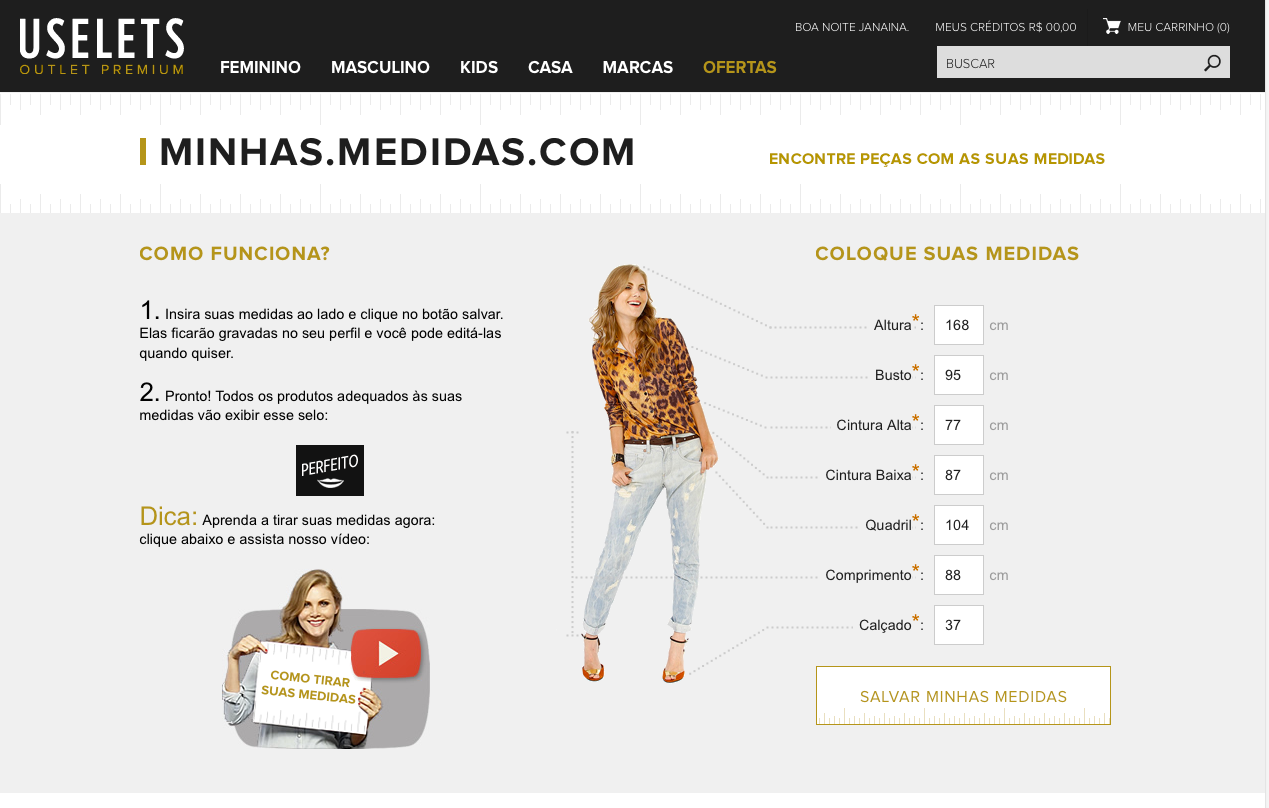
Male version:

After completing the measurements, a showcase with all the products concatenated with this information is displayed next. An algorithm was developed to increase the display of these products through the website's shop windows according to the user's data.
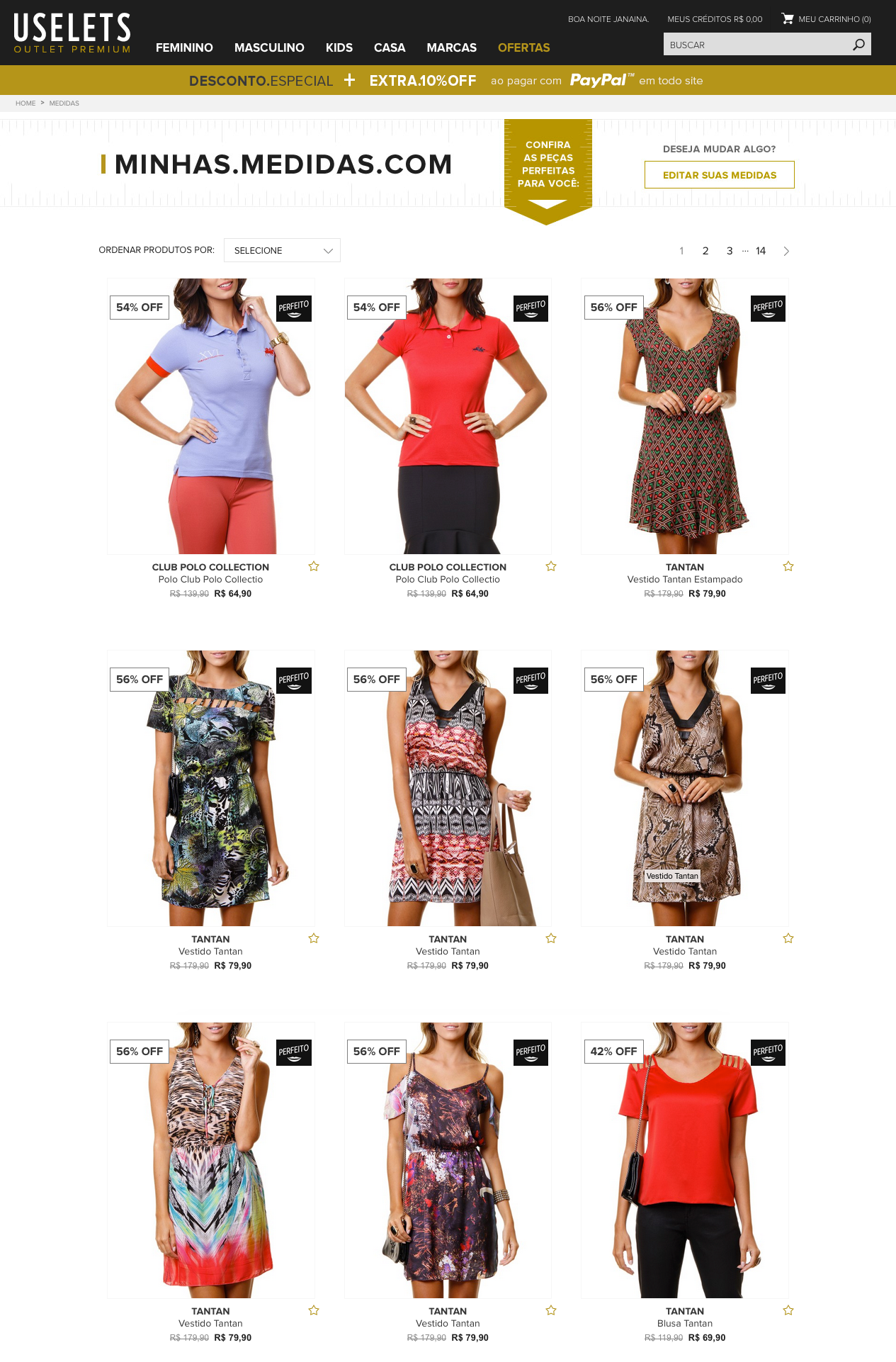
The next step was the creation of a product indicative seal with exact user measurements, to be displayed on the window and on the product page. Products with this seal have the correct measurements of the user and already with the measurement selected to be immediately purchased by the same.smo.
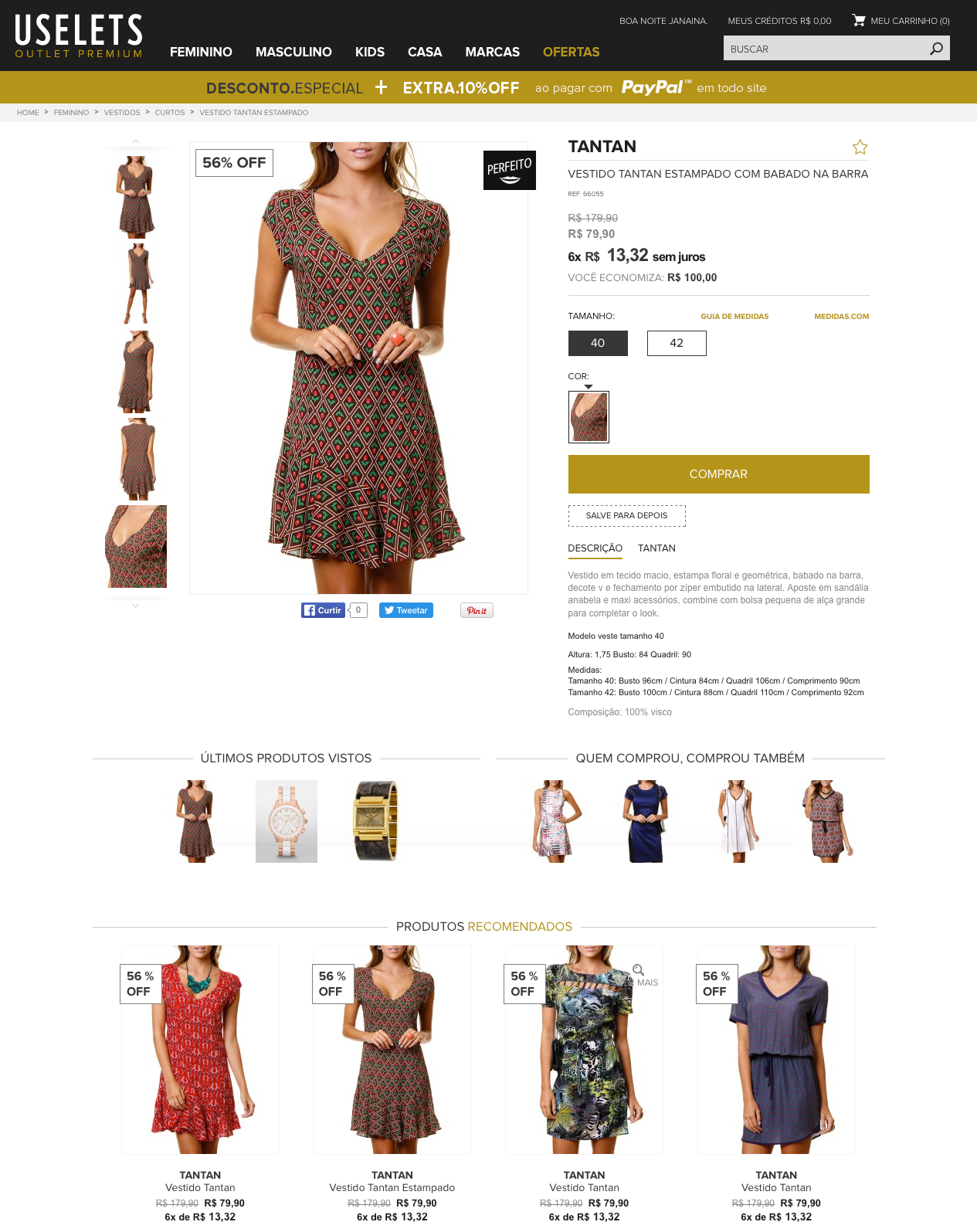
A measurement editing screen was derived from the initial input screen for the user to correct or update their information.

User testing
Most of my user tests were with people around the office. I took advantage of opportunities to approach them for 5 minutes to do the tests and then receive suggestions about the prototype, as soon as they finished registering the measures.
Results
The search section was directly associated with the measurements reported by the user and now returns results with customized products.
What was verified after the implementation of an AB test:
- Reduction in the number of exchanges, returns and complaints based on incorrect sizes of products delivered with the measures feature implemented.
- Increase in products favored by the user: even if they did not buy immediately, products with the user's measurements were being stored in their personalized windows more frequently.
- Increase in users who completed the purchase flow, as a result of viewing products compatible with their needs.
These arguments were satisfactory for publishing the functionality in the production environment. Interpreting the metrics after a period of 1 month with the measurement functionality inserted, it was found that the user's problem of not finding products with his measurements was initially solved. As a consequence of personalization through user clothing measurements, the website gained an increase in conversion, perceived by the data obtained with the improvement of the product's findability in the user's journey.
